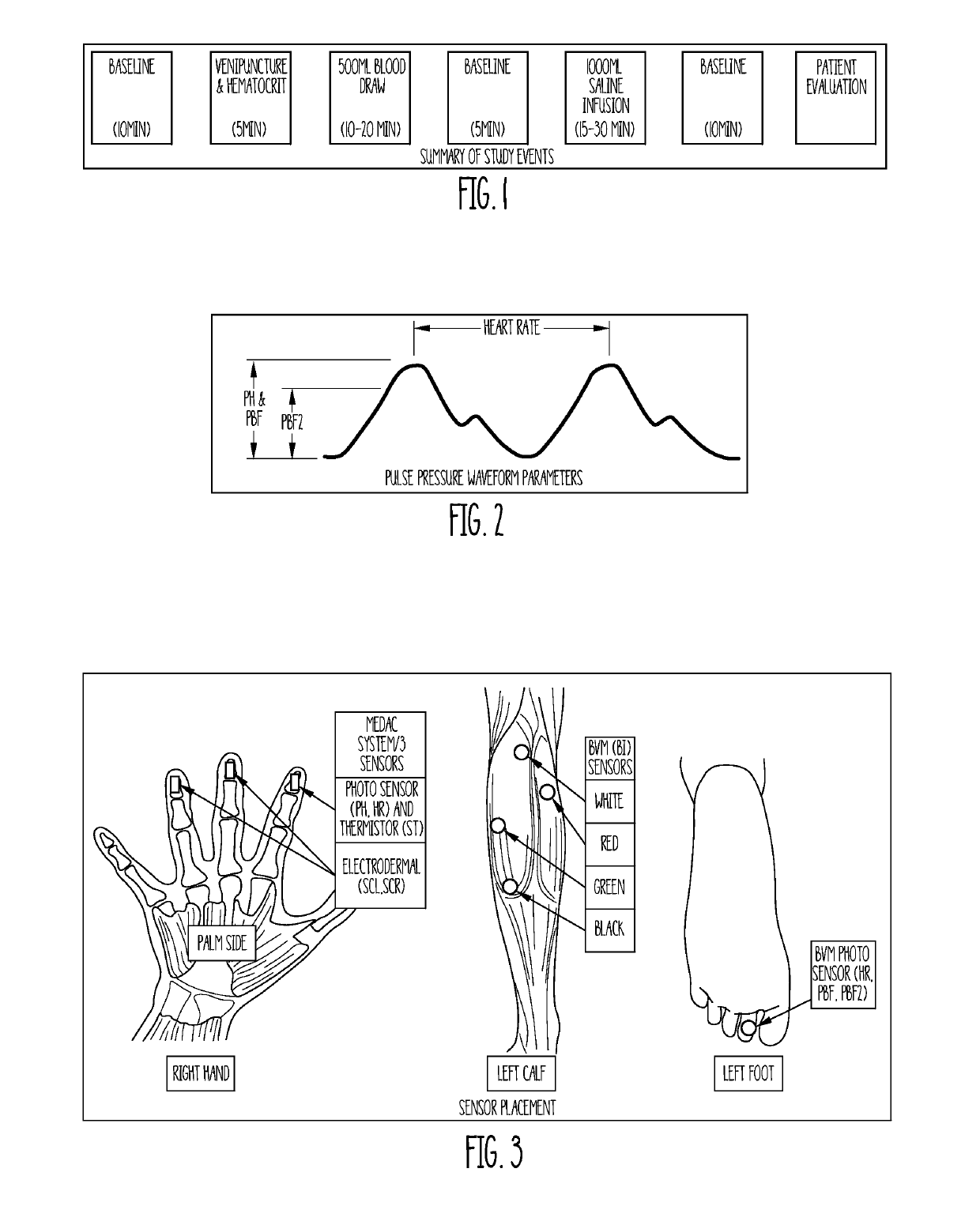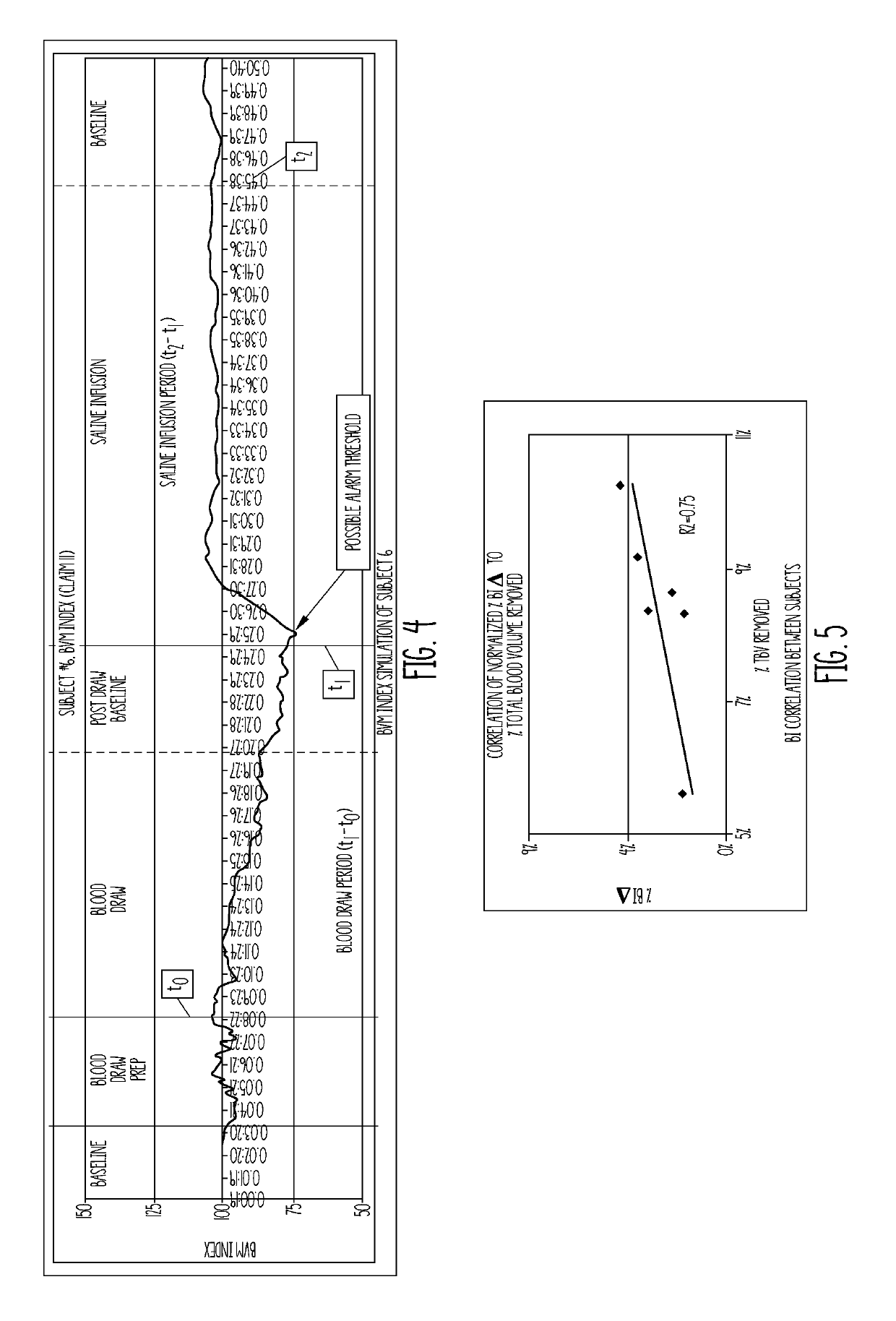Method and apparatus for non-invasively detecting blood volume imbalances in a mammalian subject
a non-invasive, blood volume technology, applied in the field of systems, methods and equipment for detecting blood volume imbalances, can solve the problem that one parameter alone is often not sufficient to consistently indicate blood loss, and achieve the effect of maintaining blood pressure and increasing heart ra
- Summary
- Abstract
- Description
- Claims
- Application Information
AI Technical Summary
Benefits of technology
Problems solved by technology
Method used
Image
Examples
Embodiment Construction
[0031]In a recently conducted study, ten healthy subjects (n=10) were evaluated during a single-unit (450-500 ml) blood draw (which is approximately 10% of the average individual's total blood volume which is about 5 liters) followed by saline infusion (1000-1500 ml). Several physiologic parameters were continuously monitored (1 Hz) for consideration of inclusion and weighting in the BVM Index algorithm. Each parameter was evaluated independently for trends corresponding to manual hemodynamic fluid changes in the subjects. The real-time values of each parameter were then input into various equations of the BVM Index algorithm for assessment of feasibility to detect incremental blood loss. The initial rudimentary algorithm of the BVM Index detected both blood loss and saline infusion in 6 of 9 (67%) subjects reaching >450 ml in blood loss.
Materials and Methods
[0032]Subjects. Ten healthy adult volunteers (age range 20-44) participated in a single-unit manual blood draw followed by sal...
PUM
 Login to View More
Login to View More Abstract
Description
Claims
Application Information
 Login to View More
Login to View More - R&D
- Intellectual Property
- Life Sciences
- Materials
- Tech Scout
- Unparalleled Data Quality
- Higher Quality Content
- 60% Fewer Hallucinations
Browse by: Latest US Patents, China's latest patents, Technical Efficacy Thesaurus, Application Domain, Technology Topic, Popular Technical Reports.
© 2025 PatSnap. All rights reserved.Legal|Privacy policy|Modern Slavery Act Transparency Statement|Sitemap|About US| Contact US: help@patsnap.com



